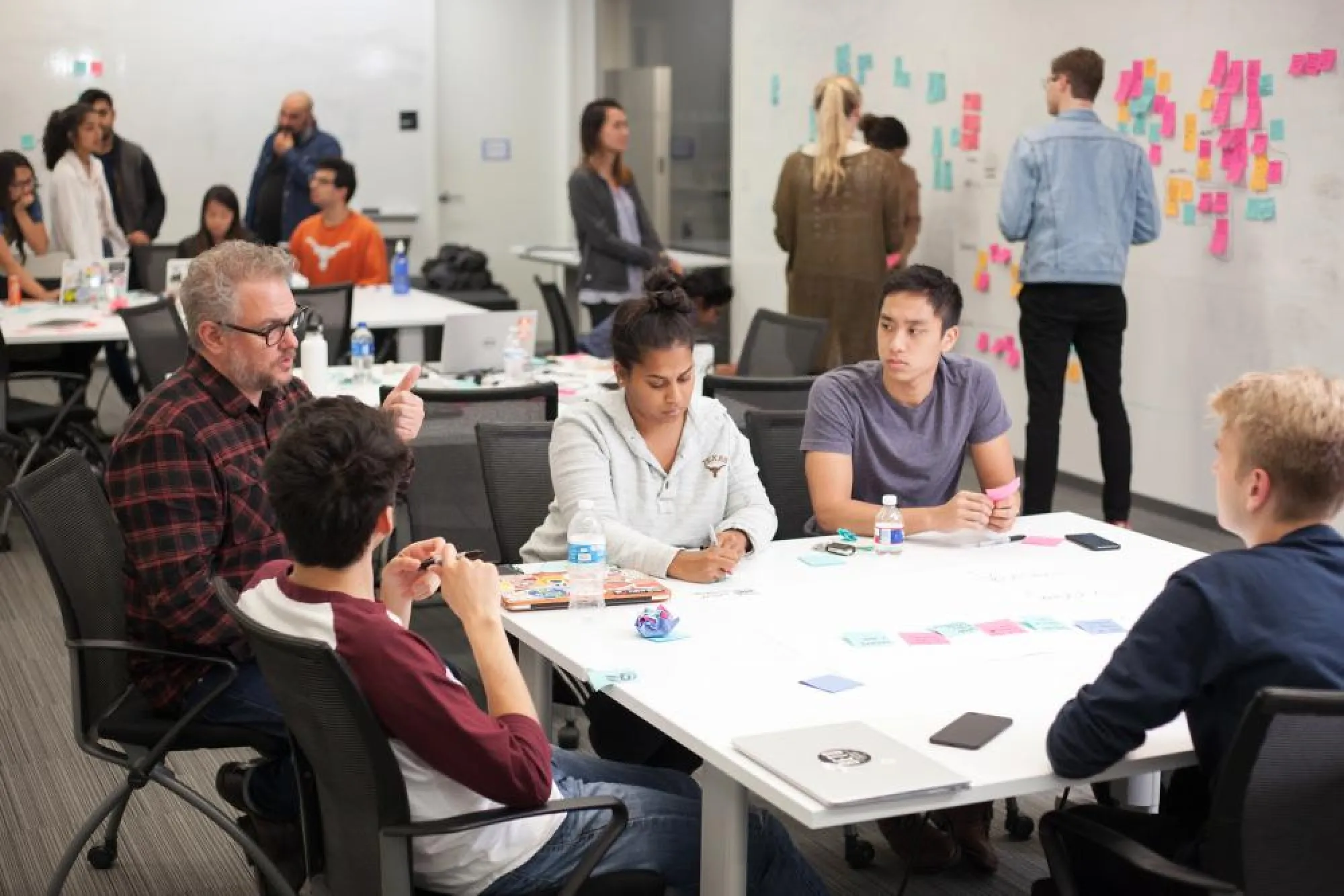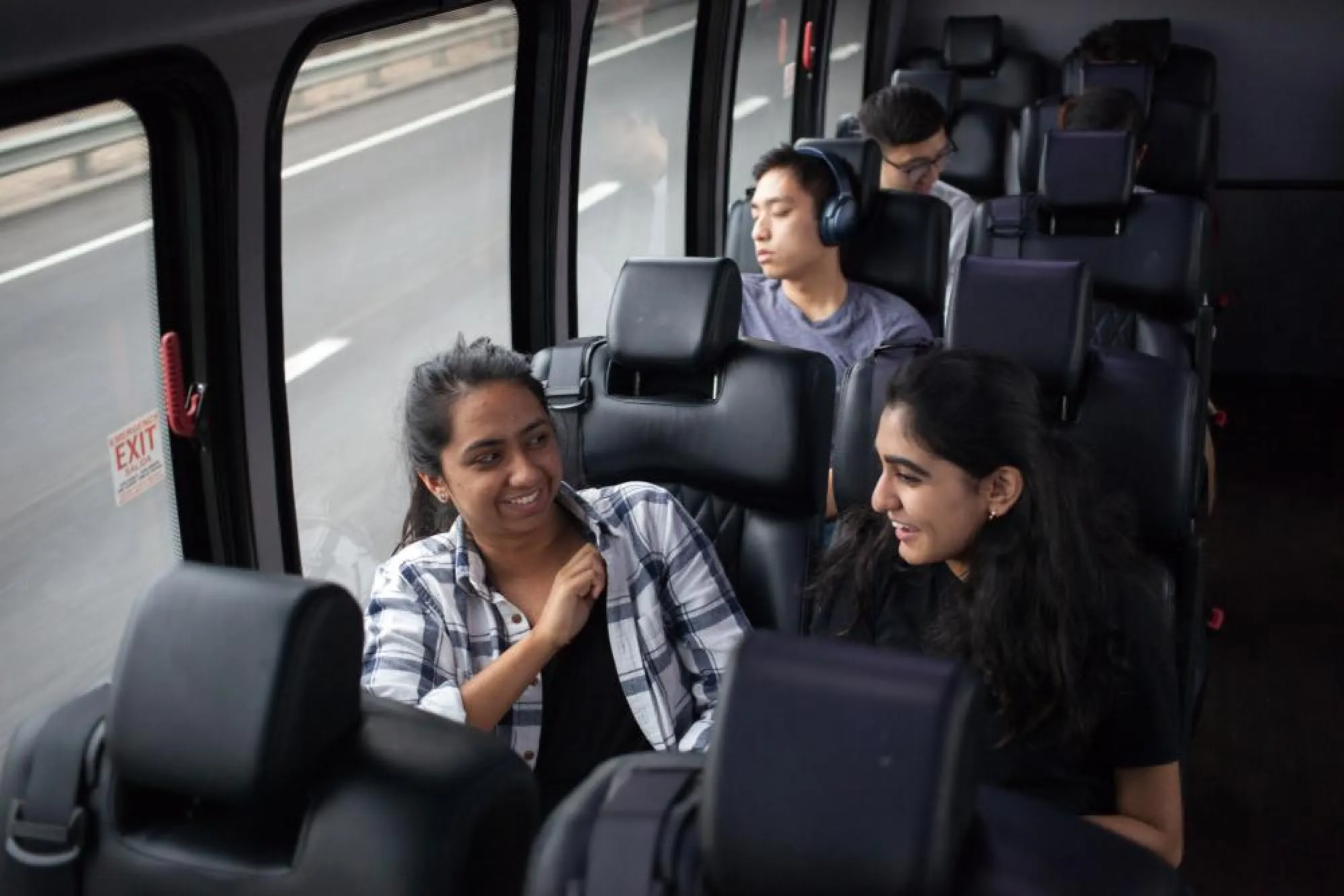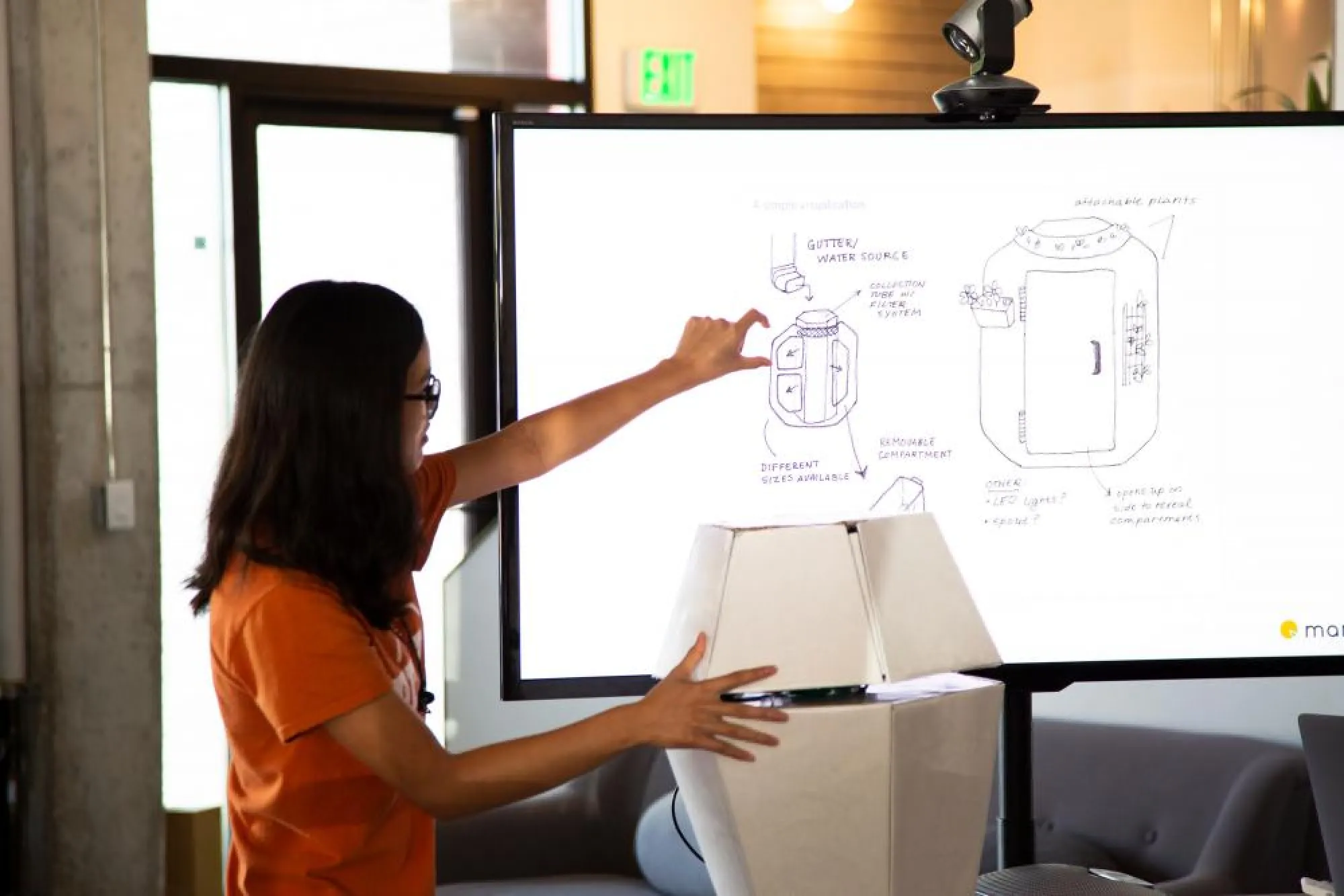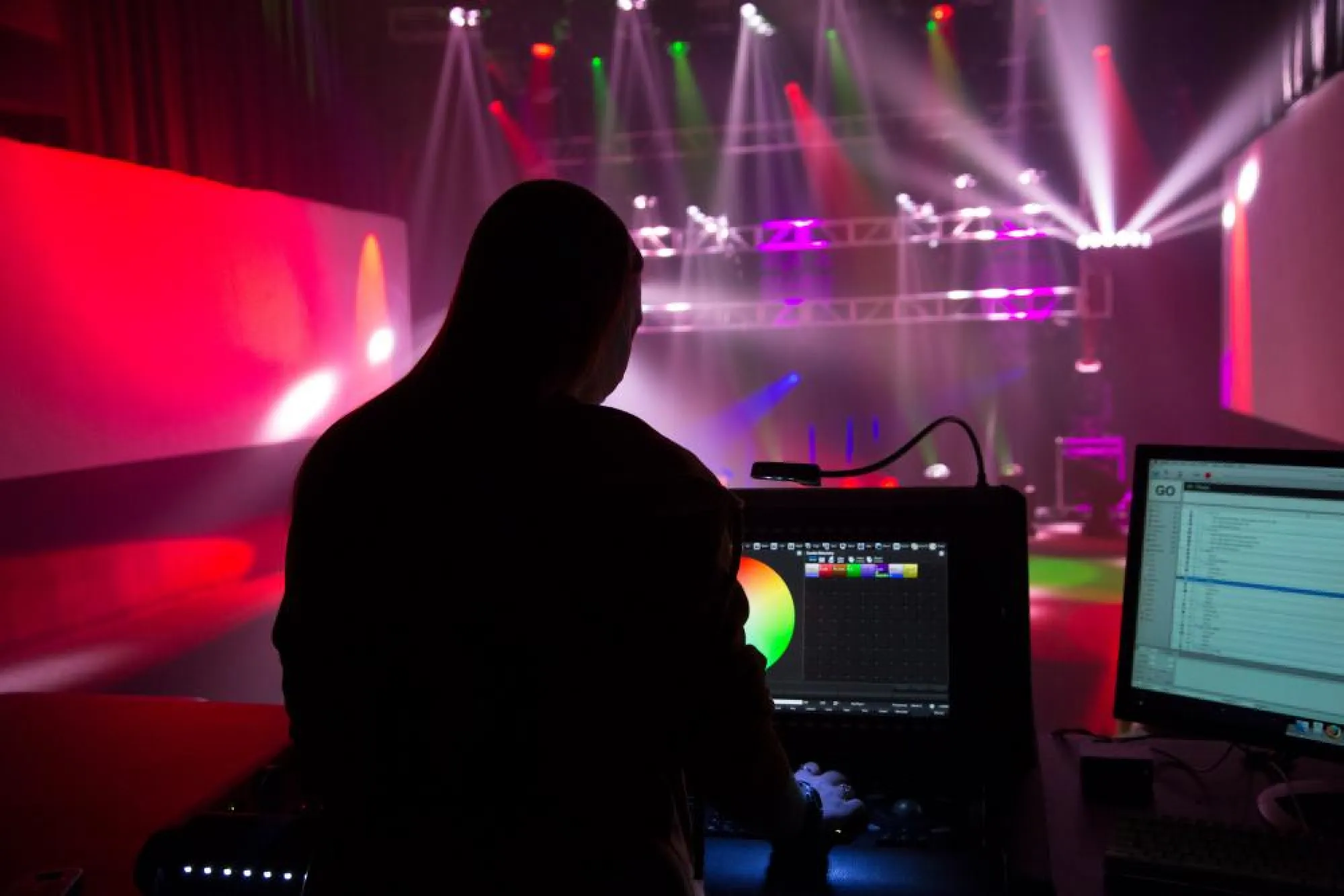Design Ideas Take Flight Off Campus
The College of Fine Arts collaborates with outside companies to create new classes supporting hands-on, experiential learning for students.
By Alicia Dietrich

***
It’s Tuesday evening in the IBM Design Studios in North Austin, and 24 UT students from the School of Design and Creative Technologies are clustered in teams around the room with their IBM instructors. The IBM designers guide the discussion, but the students are responsible for brainstorming ideas and thinking through next steps. There’s no final exam in this class. There are no “right” answers.
“This class is really teaching me that I need to think of all possible options and dive deeper into the mess and be OK with ambiguity, which was something that was really difficult for me,” said Audrey McNay, a senior in advertising who is enrolled in Advanced Design Thinking @ IBM.
The IBM class is just one of many classes now offered by the College of Fine Arts’ Center for Integrated Design that are taught through collaborations with outside companies. The college has been collaborating with outside companies to design hands-on classes for students to tackle real-world projects, often on site at the company’s off-campus location.

Doreen Lorenzo, assistant dean for the School of Design and Creative Technologies and founding director of the Center for Integrated Design, said the ideas for these classes came from talking to colleagues in businesses, nonprofits and government and learning more about what they need and observing gaps in students’ educational experiences.
“When students are in traditional classrooms, we provide a wonderful, safe environment for their big, creative ideas,” said Lorenzo. “And we want them to have that experience, but there comes a point where they're going to take this knowledge that they're learning, and they have to begin to apply it in situations that are real. What I found is that many didn't have those real-life situations, and I wanted to figure out a way to make it more real for them.”
It's basically like I'm interning for IBM. I cannot get any more hands-on and closer to what they are doing than right here, right now.
The student teams at IBM are focused on applying a human-centered design process to find solutions to real problems that IBM is working to solve in their company—such as designing a blockchain system or revamping the IBM training site. The students in the class were selected through a competitive application process and hail from many departments at UT.
“When I applied for this course and I got in, I expected it to be a type of project where IBM would have solved the problem a year or two ago, and they just want another student group to tackle it and maybe solve it a different way. And that has not been it at all,” said Harper Yatvin, a senior in corporate communications. “Instead, it is, ‘Here's a problem that we need younger minds to solve.’ I really like that because it's basically like I'm interning for IBM. I cannot get any more hands-on and closer to what they are doing than right here, right now.”
After the success of partnering with IBM for the first offsite class in fall 2017, the college continued building new collaborations with insurance and financial services company USAA, business consulting firm McKinsey & Co., argodesign studio, artificial intelligence design studio Hypergiant, railroad company BNSF and local design studio Drawn. The Department of Arts and Entertainment Technologies also partnered with lighting company High End Systems to co-teach a class on concert and event lighting, in which students did their final project in the lighting lab at High End Systems.


“As far as I know, this doesn't exist anywhere,” said Lorenzo. “And I was told this by most of the businesses I went to. They had never seen anything like that. Businesses obviously have internships, and businesses have been sponsoring classes, but those are on campus. But to actually have classes taught in a business's location—nobody could tell me this has been done before.”
The programs are win-win for students and the companies. Students have the opportunity to immerse themselves in an unfamiliar environment and solve complex problems, and companies have the chance to give back and maybe find their future star hires.
“We want to be responsible contributors to the community, and we feel like this is a wonderful way to do it,” said Kevin McDonald, lead instructor for the course Making Real-World Design taught at argodesign’s studios in South Austin. “Will it yield potential employees? Perhaps. But I'm less about that than more about making sure that we're paying it forward and making sure that the opportunities and chances that we had been given earlier in our careers, that we provide the same thing for younger students.”

When Theatre and Dance senior Grayson Rosato entered his junior year, he felt sure he was going to work in arts management someday. But a whole new world of options opened up for him after taking several courses offered by the Center for Integrated Design.
He intuitively understood many of the concepts they were using in his Integrated Design classes because he’d been using these same skills for years in his theatre experiences: He’d practiced empathy by exploring a character’s motivation in shows he had acted in, he understood how to connect with audiences, he’d pitched shows to Cohen New Works Festival, and he understood storytelling and narrative arc from breaking down plays they were reading in his classes. But Rosato had never thought about how those skills were applicable outside of the world of theatre.
“These classes have made my arts education super relevant,” Rosato said. “I knew I had these skills. I knew I could work in interdisciplinary teams. I knew I could have a bigger picture. But when all of your experience is in theatre or art or design or music, other people outside of that world don't see it. Now I'm taking these exact same skills and just applying it to a different context, and I'm flourishing.”
Rosato has taken two classes that were created as partnerships with USAA and Hypergiant, and both courses dealt with designing for machine learning and artificial intelligence. Rosato said that the classes were challenging because he and his team had to work on tight turnarounds, and they had to learn to take constructive feedback on prototypes and quickly turn it into action to iterate on the next version of their idea.
As he headed into his final semester at UT, Rosato accepted a spring internship with Hypergiant that could lead to a full-time job after graduation, and he credits the courses he’s taking in Integrated Design with giving him the hands-on experience and portfolio projects to make this possible.
“The experience we got with USAA was on an elevated level of what you would get in an internship,” said Rosato. “I feel like we were treated as employees of USAA with a guiding hand. It was a challenge, but it was the best challenge because you don't get that experience when you're not a student. You can't ask somebody to do that for you when you get a job.”

